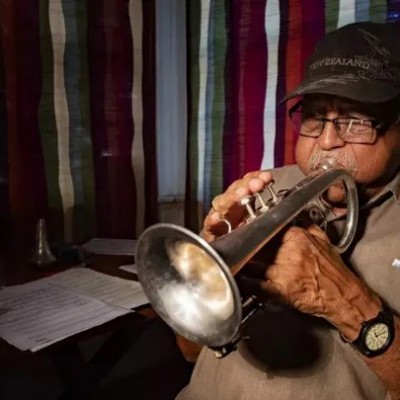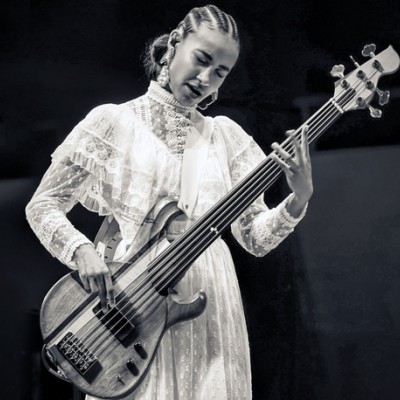Oct 28, 2025 10:47 AM
In Memoriam: Jack DeJohnette, 1942–2025
Jack DeJohnette, a bold and resourceful drummer and NEA Jazz Master who forged a unique vocabulary on the kit over his…

Paal Nilssen-Love, drummer in The Thing, is heading out on a tour of the States with the trio.
(Photo: Peter Gannushkin)Scientists and philosophers through the ages have debated whether nature or nurture plays a greater role in shaping human behavior.
Paal Nilssen-Love is unlikely to settle the debate, since jazz and drumming have been a part of his life and in his blood since the day he was born in Molde, Norway. He learned to drum playing his father’s kit, and since his parents ran a jazz club in Stavanger, his teachers included each percussionist who came to town.
In his teens, Nilssen-Love began playing with free-jazz reedist Frode Gjerstad, a relationship that’s still going today. And by the early 2000s, Nilssen-Love had launched an international career, playing alongside Swedish saxophonist Mats Gustafsson and American reed player Ken Vandermark, among others.
The drummer’s taken sojourns to Brazil and Ethiopia, and has brought sustaining energy and exactingly responsiveness to ongoing relationships with saxophonists Joe McPhee, Akira Sakata and Peter Brötzmann. His stylistic reach encompasses the post-bop jazz and jagged punk-noise with members of The Ex, and a high-octane cocktail of free-jazz with The Thing. And since 2013, he has composed and led a pan-generational, pan-Scandinavian big band called Large Unit.
In March, the drummer will join Gustafsson and bassist Ingebrigt Håker Flaten for four dates in support of The Thing’s recent LP with James “Blood” Ulmer, Baby Talk, and a forthcoming release, Again, that features McPhee as a guest on one track. In June, Large Unit’s also set for a U.S. tour.
The following has been edited for length and clarity.
Are you planning to have guests perform with The Thing while touring the States?
Just the Thing as trio. But then Mats is doing a gig with Four Tet and I’m doing a gig with Arto Lindsay at the Big Ears Festival.
Have you recorded with Arto?
That was years ago. We’ve still got some tapes that we want to release, but he is busy, I’m busy—that all takes time.
I’ve never heard you play with him.
With Arto? That’s all improvised, but he’ll quote Brazilian tunes by Caetano or Chico Buarque, so he’s singing as well. All of that will be as spontaneous as the music, but it’s basically freely improvised.
What’s your connection to Brazilian music?
About three or four years ago, I was in Brazil for the first time and it was very much like going to Ethiopia for the first time: sort of culture shock, music shock, everything. I felt similarities between the two countries and their music, because almost everyone knows every song that’s been on the radio. Old songs are being played and rearranged by musicians today, years and years after they were written, and it’s a big part of their culture. After going there the first time, I realized that I have to go back as much as possible, go to concerts, do concerts, workshops, take lessons from percussionists, meet musicians, check out more records.
So, of course, as with the Ethiopian music and rhythms, after a while, it shows up in my playing—hopefully in a natural way. It’s not like I walk on stage thinking “OK, I’m going to play this part of a rhythm from that part of Brazil from that song,” or whatever; and the same with the Ethiopian music.
I remember doing a duo gig with Ken Vandermark and afterward he says, “Yeah, it’s great to hear these Ethiopian rhythms and how you’re dealing with them.” I said, “What are you talking about?”
He was actually referring to a Northern Ethiopian rhythm called “tigrigna,” which I just happened to be playing that night. It’s important to let those rhythms evolve and develop within myself in a natural way.
You’re not known as a composer, so how did you set about writing for Large Unit?
Actually, I did do some composing back when I was 20 or so, starting in Trondheim. And in a way, I regret not continuing back then.
The music we do with Large Unit is something between Ken Vandermark’s Territory Band and the Brötzmann Chicago Tentet ... . I wanted structures but also a lot of freedom. There’s some traditionally written pieces, but also a lot of pieces with some odd ideas; so-called “game pieces,” where the individual players are free to use written cues in the material and change the direction of the piece multiple times.
How’d Large Unit come about in 2013?
Before the Tentet ended, I was thinking of putting together a larger group, but it was basically a request from the Molde Jazz Festival and the chance to use the production space of another musician, Eldbjørg Raknes, which gave me the initiative to do it. I thought, “Now is the time to put together a large group,” and I spent maybe half a year putting the names together and checking out younger players in Oslo. I wanted to play with some younger musicians.
Why’s that?
That’s one thing I’ve learned from all the different bands with Frode Gjerstad. He’s always seen the importance and joy, I think, and the necessity of playing with younger musicians. You feed of them, they feed off you, hopefully.
Did you recently play a birthday show with Frode?
Yeah, we did a tour, about nine or 10 gigs with the trio, plus Steve Swell. Then in Oslo, we had two nights; three sets each night from different bands that he had. It was a celebration of his 70th birthday.
What do you think about The Thing’s new LP, Again?
We wanted to go away from doing all of these garage rock or rock cover songs. Quite a few of the gigs that we’ve done in the last few years have been completely improvised. Mats had an idea of writing a longer piece, a kind of a suite; Ingebrigt had an idea which turned out to be a proper piece; and then there’s also a piece by Frank Lowe, “Decision In Paradise.” Joe McPhee joins us on that. I would say it’s an album that I’m very, very happy about. DB

Jack DeJohnette boasted a musical resume that was as long as it was fearsome.
Oct 28, 2025 10:47 AM
Jack DeJohnette, a bold and resourceful drummer and NEA Jazz Master who forged a unique vocabulary on the kit over his…

“Think of all the creative people I’m going to meet and a whole other way of thinking about music and a challenge of singing completely different material than I would have sung otherwise to my highest level in dedication to the moment,” Elling says about his Broadway run.
Sep 9, 2025 1:18 PM
Kurt Elling was back at home in Chicago, grabbing some family time in a late-June window between gigs. Sporting a smile…

Pat Metheny will perform with his Side-Eye III ensemble at Big Ears 2026 in Knoxville, Tennessee, next March.
Sep 9, 2025 12:19 PM
Big Ears has announced the lineup for its 2026 festival, which will take place March 26–29 and include 250…

“[That’s] the thing of the beboppers,” Bradford said. “These guys were important for not only playing that wonderful music, but they knew a sort of social stance, you see?”
Sep 9, 2025 1:07 PM
It was a calm, balmy, near-perfect evening in Westwood, California, not far from UCLA, in the expansive courtyard at…

Esperanza Spalding closed an audacious Chicago Jazz Festival set with “Endangered Species.”
Sep 9, 2025 11:50 AM
The 45th Chicago Jazz Festival kicked off its headline events with two erudite individuals, Esperanza Spalding and…